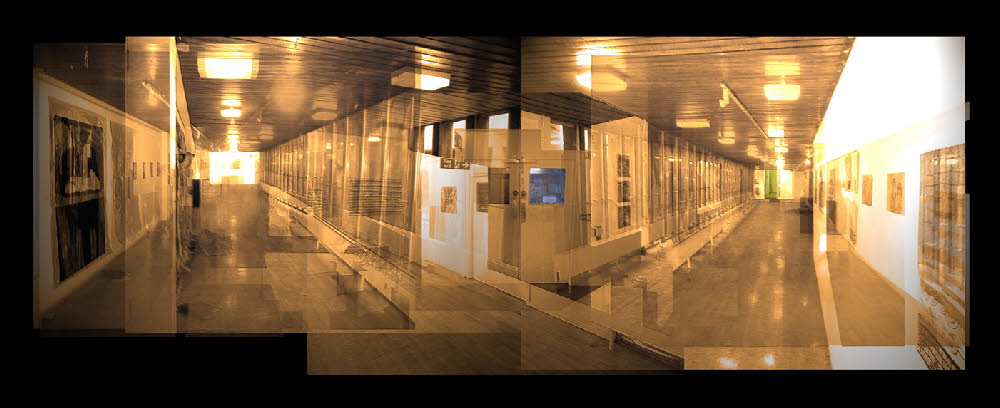
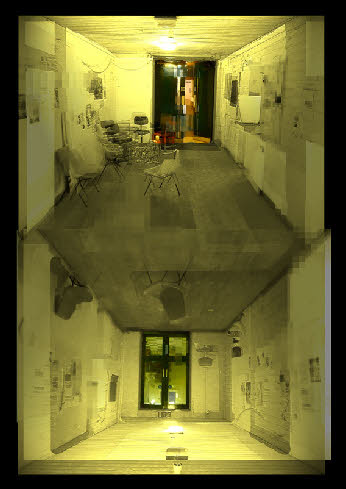

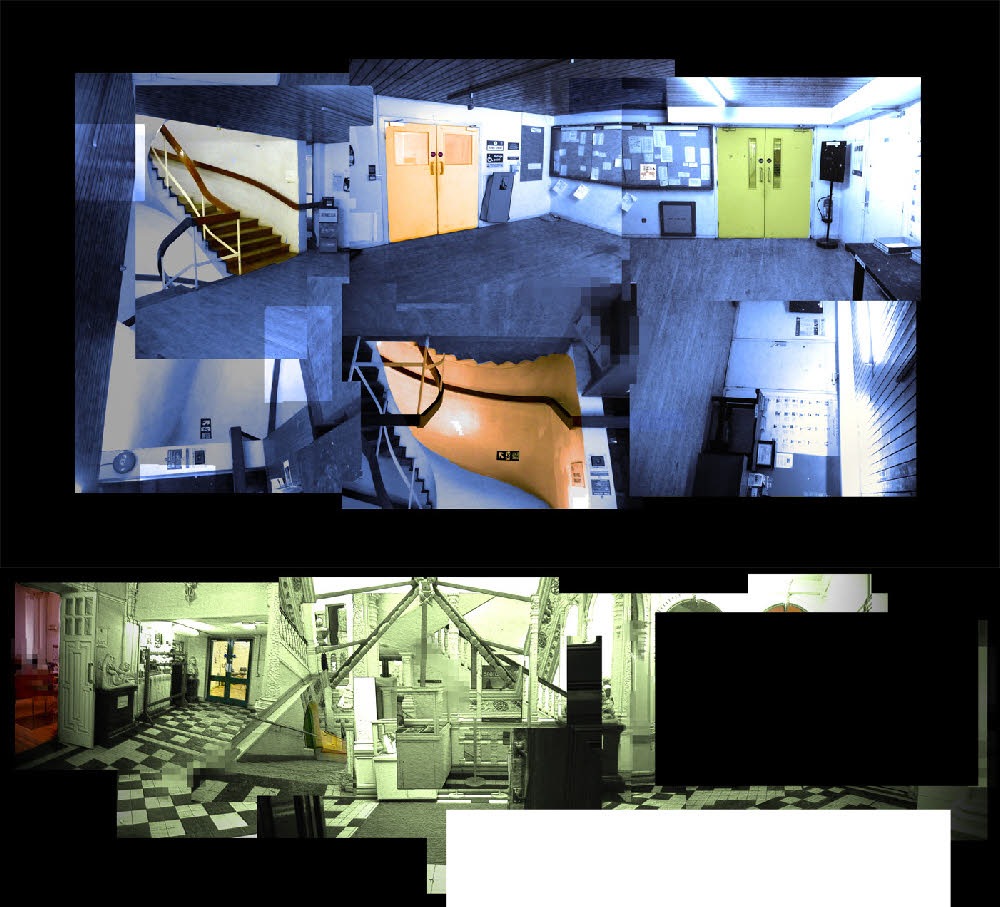







Final Year Forum
I presented my Final Year Forum presentation on Tuesday 16-2-10.
The feedback received was overall very positive. The discussion following the presentation raised a number of things for consideration, some of which have been brought up before.
The main section of my presentation was displaying my Memoria project. It was the first time for many to experience it, only a small number of people had seen it previously.
What is Final Year Forum?
Final Year Forum is an opportunity for Stage 4 (final year) Fine Art students to present their work to their peers. It takes place in the Lecture Theatre of the Fine Art Building in Newcastle University.
The Forum takes place every week and usually consists of 4 people presenting. The presentation will usually be spoken with a projected slide show presentation displaying relevant imagery.
Many people use it as an opportunity to showcase their current work and receive feedback through a question and answer session at the end of their presentation. Some also take some time to relay how they have come to where they are at by visiting previous years work.
Presentations including questions run for 15 minutes each.
It was raised that the experience is reminiscent of a computer game. This is not the first time the discussion of games has come up surrounding the work. The piece was not influenced by the nature of computer games but I don’t believe I can ignore the connection people are making. My work is not a game in any way, but people have pointed out similarities for me to look into.
I believe people are making the connection through the fact that within the piece you are given a choice as to how it is explored. I raised the point that the narrative within the work is only detached from more linear forms of story telling through the fact you can experience the narrative in any order, experiencing as much or as little of it as you want. The piece is a reflection of modern day memory systems and how there is a stark correlation between the likes of the Internet and ancient mnemonic techniques whereby a system of ‘memory locations’ allow for the mass storage and recollection of information. I believe it is the fact that it is an interactive digital medium I am working is that is bringing people to relate it to a game.
The piece as it stands is made up of chapters. These chapters could just as well be the chapters of a book, the chapters of a movie or the acts of a play. All of these mediums however are linear. Memoria is interactive and provides choice and hence is not linear.
I find it an interesting point because I have grown up with computer games and I believe they must influence me in the ways I think and perceive digital mediums. Two games I have been told to have a look at are Myst and Riven which apparently share similar interactive environments. I strongly believe that games are a powerful digital medium in which to relay stories, emotions and states of mind. I think there is a large scope for focused research here, as my research into memory systems has already opened up what I believe art to be.
One of the points I highlighted was the want for people to explore the piece. I want for people to want to find out what the work its saying, they should want to experience more of the work, see more of the imagery, piece together more of the narrative. The aesthetics of the piece highlight the fragility and potentially fragmented nature of digital information.
Someone raised the point that the visuals were too sleek and shiny, unnecessary for what I am wanting to achieve. Others countered the comment stating that the visuals need to be interesting if there is any hope of people wanting to explore further. When making the images I try and make each location memorable and vivid in its own way so that it doesn’t get lost in the vast sea of imagery. The conclusion I have made from this discussion is to keep the images interesting, but to watch out for any unnecessary Photoshop work that doesn’t lend itself to the work in any other way than to increase it’s aesthetic diversity.
The unsettling nature of the piece was highlighted. I think that is inherent in the way it is displayed thanks to the content of the narrative. The piece has been said to convey a feeling of nostalgia, which is a product of my intention. As I’m making it I’m keeping in the front of my mind that it is supposed to be the memory (the essence) of something that has past. The words are that of people who have thought these thoughts in these places. When I began the script was titled ‘What if walls could talk’, but its not just about the building holding onto things that have past, it is also about how we are going to be looking back in the future. What will happen when things only exist as digital images, when peoples thoughts and memories exist only as blogs, Internet sites and digital information?
Another point that was raised was the physical building itself. The primary reason for the choice of building stems from ‘The method of Loci’, the notion of using memory locations to store information. The classical method is to use a vast familiar building that you can move from room to room easily in your mind. The Fine Art building is a perfect candidate for such a memory building. The secondary reason is that it allows me to create an interesting and expandable framework into which I can have different areas of exploration. In no other building would it seem appropriate to discover an artwork displayed on a wall that can then lead you to another location or another piece of art. I see the building as a network for narrative and exploration. It is the main frame from which other ideas can branch off.
After the forum I discussed with various people the ways my work could be presented in the degree show. Various ideas were discussed like whether I should project the work on a large scale and have a single user or on various smaller scales so that more people can view it. This is a whole other topic for writing about but my inclination at the moment is to have it as immersive as possible; projected large with sound surrounding the viewer. The piece exists online so is viewable to a worldwide audience of potentially millions. When it to comes to the show I will have to emphasise this point, so that if people don’t get to experience everything they want they know they can explore it more at home.
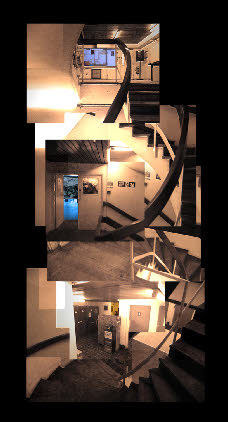
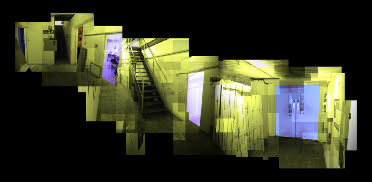
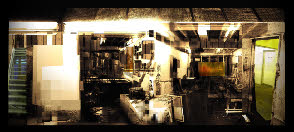
Click here to see a part of Memoria
All work in progress